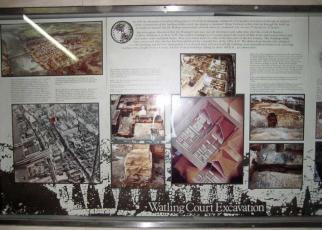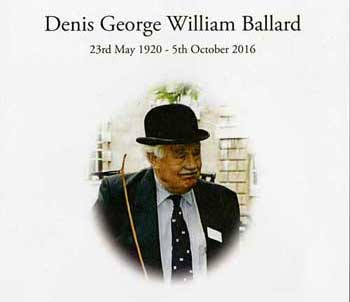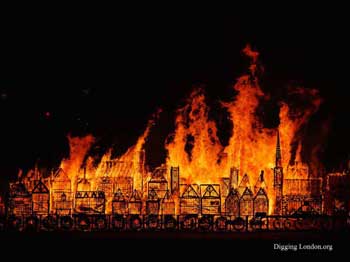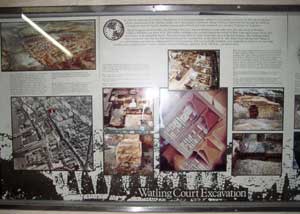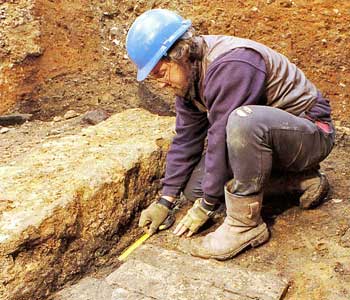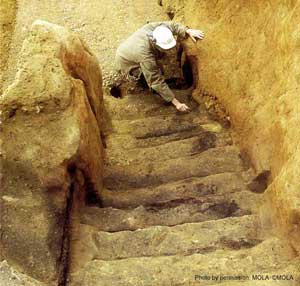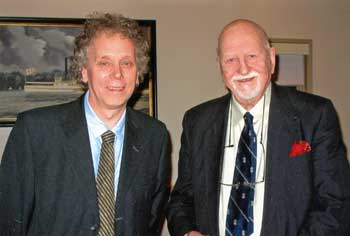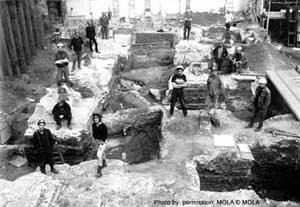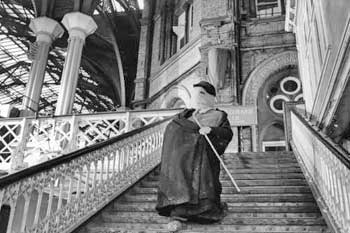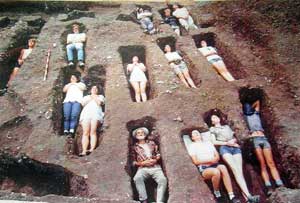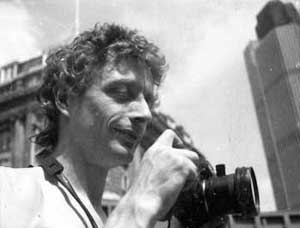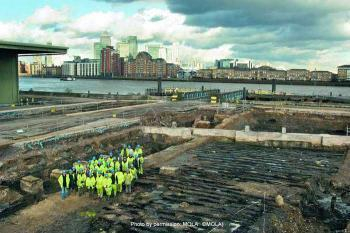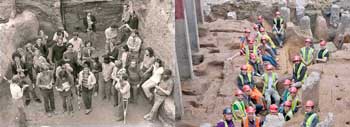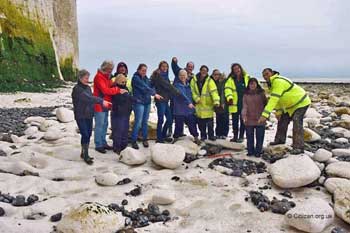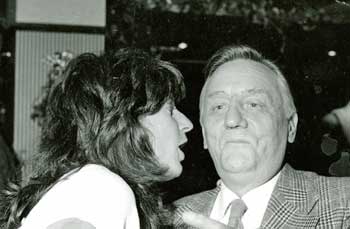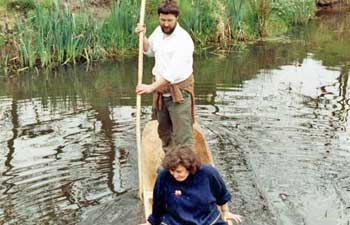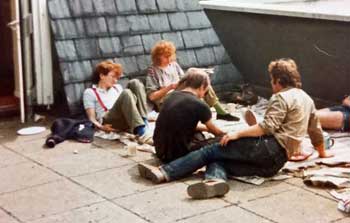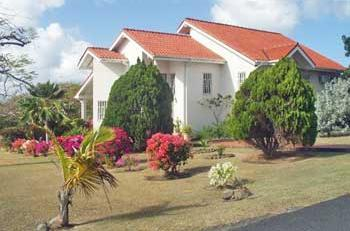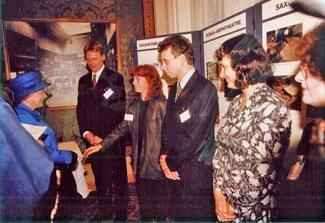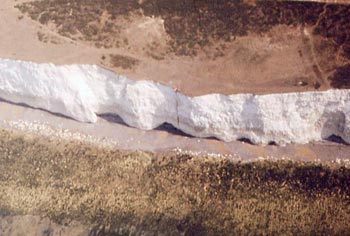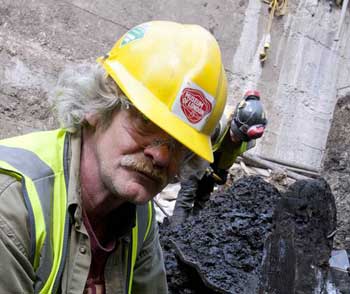What goes around comes around!
Ian Blair
The face, and most of the faces, of urban archaeology in the City of London has changed over the past 40 years, as the care-free days of recognisable diggers clad in skimpy digging gear (in the summer, and often beyond!), has given way to an army of hard-to-recognise archaeologists identically clad and masked by PPE (personal protective equipment).
Denis Ballard: ’A Life Well Lived’ (1920–2016)
Ian Blair
Back in 1987, whilst working on the Guildhall art gallery site (GAG87) I happily shared a small trench with Denis Ballard, who at the age of sixty seven had just completed an archaeology degree. Denis was an accountant by profession, and indeed was only to fully retire from complex mental arithmetic at the age of ninety.
Goodness gracious, Great Fires of London!
Ian Blair
September 2016, saw the culmination of a series of events across the City of London entitled: ‘London’s Burning’ Great Fire 350, marking the 350th anniversary of the Great Fire of 1666. As any archaeologist working in the City will attest, fires within the city were relatively commonplace, with physical evidence of not only the Great Fire, but two much earlier Roman conflagrations (the Boudican and Hadrianic fires), being found on numerous sites across the City.
What goes around, doesn't always come around!
Ian Blair
Whereas, there are countless examples of former archaeological sites in the City that we are now revisiting, we have not been so fortunate on other former DUA sites. Two such sites, are Watling Court (WAT78) supervised by Dominic Perring, and Miles Lane (ILA79) supervised by Louise Miller (Malkin) where the buildings have recently been demolished, and the sites now being redeveloped.
Heavy Metal on Regis House
Ian Blair
For a period of several weeks on Regis House, our superb metal-detectorist Pat Connolly (more of him in a later post), had been getting ever-more excited by a massive signal that was given off as he passed the detector over an area of one of the Roman quayside warehouses destroyed in the Hadrianic fire. Further excavation revealed that the signal had its origins in 3 large lead ingots (stamped with the Emperor Vespasian’s name) which had been deliberately hidden beneath the warehouse floor.
When is a quarry pit, not a quarry pit?
When it’s a Roman cellar!
Ian Blair
The excavation on the smallish site at 7-11 Bishopsgate in 1994 (ETA89), supervised by Dave Sankey with his customary relaxed grip on the helm, stands out in my mind for two reasons. The first is that Richard Hewett must have single-handedly bought up the entire stock of Kinder Eggs from across London, so there was never a shortage of chocolate to be consumed, or assorted small toys to be assembled during our breaks.
Walbrook to Williamsburg: two London born archaeologists with a shared past and present.
Ian Blair
In August 2016, I flew back from Washington, following a visit to Ivor Noël Hume and Carol his wife in Williamsburg, Virginia.
This was my fourth such visit since 2007, and provided another opportunity, for two London born archaeologists, to talk about their shared past and present. I first made contact with Noel, back in 2001, following the discovery of the Roman bucket chains in three massive wells on 20-30 Gresham Street (Blossoms Inn) and 12 Arthur Street in the City of London.
Lloyd’s Register of Shipping
71 Fenchurch Street, London EC3 (FCC95)
Ian Blair
One of the largest projects undertaken by MoLAS in 1996–97, was the excavation of the site of Lloyd’s Register of Shipping, 71 Fenchurch Street.
From the Elephant Man to Bedlam
Ian Blair
Five years before the excavation by Dick Malt and his team at Broad Street Station, Liverpool Street (LSS85) in 1985, the Elephant Man (or at least John Hurt in his guise) had been pursued by a mob through the old Liverpool Street station.
'Grave expression'
Ian Blair
Photos from Dave Saxby and Patrizia Pierazzo
Merton Priory (MPY86)
‘After a particularly heavy lunchtime session, a group of DGLA archaeologists working at Merton Priory in 1988, return to their graves to sleep it off.’
'Archaeology through a lens': Unsung heroes of London archaeology No.533
Ian Blair
It struck me recently, that whilst there have been hundreds of archaeologists working in London since the formation of the DUA in 1975 to the present day, just how few photographers there have been in the intervening period, a paltry six in over forty years of continuous archaeological excavation!
‘Known unto God’: Deptford Royal Dockyard (Convoys Wharf)
Ian Blair
Huddled together like a colony of emperor penguins wearing PPE to help weather the Antarctic winter, a group of archaeologists stand beneath a Turneresque sky on No 1 slipway, at Deptford Royal Dockyard site (known as Convoys Wharf) in January 2012.
That was then, this is now
Ian Blair
Whilst thirty seven years separate these two photographs of the archaeologists who worked on two large excavations in the City of London: the GPO site (GPO75) Newgate Street, and the recently completed Fenchurch Street (FES15), I felt that it would be interesting to compare and contrast.
Belle Tout well shaft Update
Ian Blair
25 April 2016
By way of an update on the earlier post related to the Belle Tout well shaft on the Sussex coast, which we aired on FB in August 2015.
The launch of the Clapton logboat reconstruction – on the River Lea at Clapton in 1988.
Ian Blair
Satellite DUA office in Grenada
Ian Blair
‘Voluntary help required from any Hobley's Heroes in "excavating finds" from this office, free accommodation provided in the room below.’
'Rock, Paper, Scissors': Queen opening the Guildhall Art Gallery
Ian Blair
A mere 47 years and 5 months into Queen Elizabeth’s reign at the official opening of the Guildhall Art Gallery on 2 November 1999, a smiling Gina Porter manages to beat her in a game of rock-paper-scissors –
Birling Gap/ Belle Tout well shaft
Ian Blair
21 August 2015
The recent launch of CITiZAN, the Coastal and Intertidal Zone Archaeological Network, brought to mind a very vivid illustration of a single feature exposed by coastal erosion, which I had seen whilst working on sites around Sussex prior to joining the DUA.
UNSUNG HEROES - Pat Connolly and Alan Gammon
Ian Blair
Two of the unsung heroes of the DUA/MOLAS in the years between 1988-1991 were Patrick Connolly and the late Alan (Al) Gammon – former Thames Mudlarks who were employed (on a full salary would you believe!) as full time metal detectorists working alongside the archaeologists.

